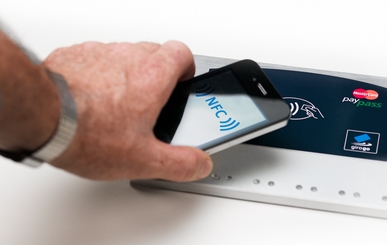Ever since the introduction of the Square’s mobile card reader that provided merchants with a simple and inexpensive way to accept and track credit and debit card payments, the mobile payment industry has been invaded by mPOS solutions. Currently, it is estimated that the overall global value of the mobile transactions will reach a rough $1.5 trillion by next year. In case you’re considering jumping on the mobile payment bandwagon, then here are some of the trends predicted by Monitise Insight and Business Insider to account for.
Large and small scale
From a readiness point of view, analysts state that US, Canada and Singapore are the best prepared countries to roll out the mobile transactions. Based on the Monitise Insight report, 81% of Americans have already paid via smartphone or tablet; however, the respondents also stated that their choice was mostly based on the fact that the service is free of charge.
At the same time, in the UK, every card issuer now offers contactless cards in an attempt to normalize such payments. As a result, 64% of British residents report making at least one payment from their mobile device. As you can see, mPOS software that are partially or fully cloud-based and that run on mobile OSs are gaining in popularity.
As far as the small retailers and merchants are concerned, the Business Insider report indicates the following conclusions:
- While the mPOS adoption is estimated at over 40% for small and medium-sized businesses in the US, the percentage is a lot lower for retailer.
- Businesses that upgrade to an mPOS solution early are likely to drive substantial revenue by transaction processing. However, getting enough merchants to support these devices still constitutes a major challenge.
- Companies that want to be ahead of the competition opt for software-based value-added services. Consequentially, providers currently focus on up-selling to existing merchants, while still working on a way to attract small businesses for pure-play processing.
- In case an mPOS hardware released will catch on, then it must be one that can displace many of the products that pair with customers tablets and smartphones.
M-commerce
The aforementioned reports suggest that consumers who own both a smartphone and a tablet are very likely to use both devices in tandem to conduct research and make a purchase. Most of the purchases done via a mobile device happen during the late evening, a trend that has remained constant in the past couple of years in the US and the UK.
Although in some European countries there is very little interest in mobile transactions – particularly in France, Italy and Sweden – the method of payment has caught on in countries like China and India. According to analysts, the low interest in mobile purchases can be linked to several reasons, including that the devices’ screen are too small to allow consumers to see the actual product.
In addition, respondents who claim to have never made a mobile payment state that they didn’t find or couldn’t see the products’ information or details. Therefore, the need to make e-commerce websites more mobile friendly is something that can’t be ignored anymore!
